Curious about growing mushrooms indoor? It’s simpler than you might think with the right growing kit! In this guide, we’ll introduce seven mushroom varieties that thrive indoors, giving you a fun and safe way to enjoy fresh, homegrown mushrooms all year long.
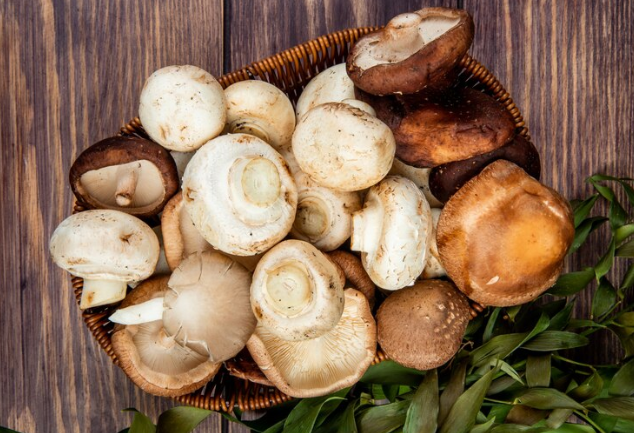
What Exactly is a Mushroom Growing Kit?
A mushroom growing kit is a pre-colonized block of growing medium, ready to produce mushrooms once it arrives at your door. Typically packed in a box or plastic bag, this medium—also known as a mushroom substrate—can be made from materials like sawdust, straw, or even coffee grounds.
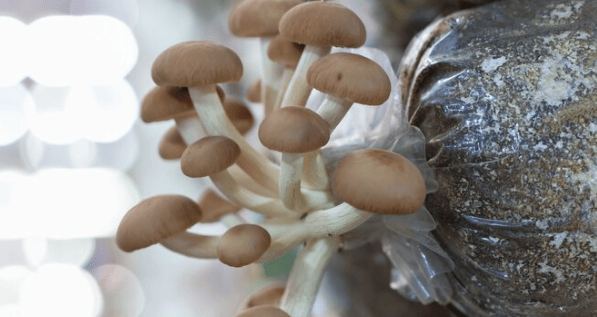
The substrate is designed to nourish the mycelium, the fungal network from which mushrooms grow. Kits usually come with easy-to-follow instructions. To begin, you’ll cut open the plastic covering, expose the substrate, and ensure proper humidity by misting it two to three times a day. Within a couple of weeks, you’ll be harvesting your first flush of mushrooms!
Ready to dive in? Next, we’ll explore the best mushrooms to grow indoors on your countertop.
Chestnut Mushroom (Pholiota adiposa)
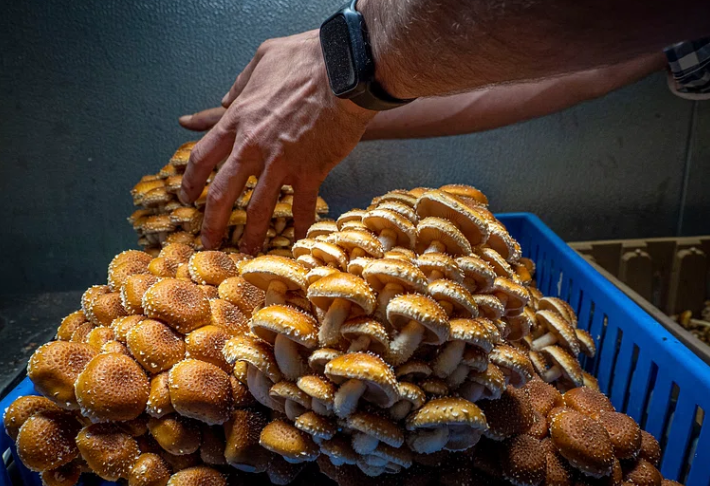
The chestnut mushroom (Pholiota adiposa) is known for its unique growth pattern, typically appearing in small, dense clusters on decaying wood or fallen trees. Characterized by orange-brown caps that are covered in shaggy, scaly textures, this mushroom stands out from other varieties. The term Pholiota, derived from Latin, means “scaly,” highlighting its distinctive appearance. Unlike the more common cremini mushroom (Agaricus bisporus), which is often found in grocery stores, the chestnut mushroom features a rougher, more textured cap, making it easy to identify. If you’re looking to differentiate between chestnut mushrooms and other similar mushrooms, the shaggy, scaly cap is a key feature to remember.
Often called the cinnamon cap mushroom, the chestnut mushroom has deep roots in Japanese cuisine. Its mild, earthy, and slightly sweet flavor makes it a perfect addition to soups, stews, risottos, and a variety of other dishes. Like many other mushrooms, chestnut mushrooms offer several health benefits, including immune-boosting properties and natural antibacterial effects.
If you’re interested in growing chestnut mushrooms at home, keep in mind they thrive in cooler environments. To cultivate them successfully on your countertop, choose a location away from direct heat sources like stoves or bright lights. When harvesting these cinnamon-hued mushrooms, be sure to cut them close to the base and wash your hands afterward, as their distinctive orange-brown color can stain your skin.
Enoki (Flammulina filiformis)
Unlike chestnut mushrooms, which thrive in cooler temperatures, enoki mushrooms (Flammulina filiformis) prefer warmer, darker conditions for growth. Cultivated enoki mushrooms have slender, near-white stems topped with small, delicate caps, and this is the variety typically found in specialty markets. Wild enoki mushrooms, on the other hand, are broader and often appear in brown or tan hues. Due to the fact that wild enoki mushrooms sometimes grow near the toxic funeral bell mushroom (Galerina marginata), most growers choose to cultivate enoki indoors to ensure safety.

Enoki mushrooms are a prized ingredient in many Chinese, Korean, and Japanese dishes. Known for their mild flavor and crisp texture, they can be the perfect finishing touch for your ramen or other savory recipes.
Growing enoki mushrooms can be challenging, so beginners might find it helpful to start with a growing kit. Kits that use hardwood sawdust as a substrate are ideal for cultivating these delicate fungi at home.
A crucial tip for successfully growing enoki: The substrate should appear almost white when it’s ready to start producing fruiting bodies. If it still looks mostly brown, it means the mycelium needs more time to develop in a warm, dark environment before it’s ready to fruit.
Lion’s Mane (Hericium erinaceus)
Lion’s mane mushrooms (Hericium erinaceus) often grow on tree trunks, appearing as bulbous, puffy, or cloud-like structures. With their distinctive white color and unique shape, they can sometimes resemble cauliflower, while at other times, their wispy, hair-like texture brings to mind the mane of a sea creature. Known by several names, including yamabushitake, bearded tooth fungus, and bearded hedgehog, lion’s mane is a fascinating and recognizable fungus in the wild.
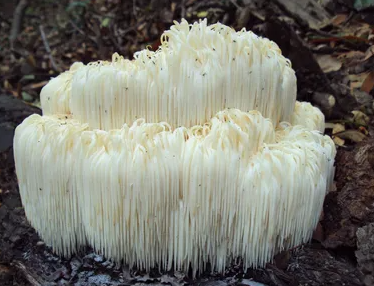
Like other mushrooms on this list, lion’s mane offers a range of nutritional benefits, including anti-inflammatory properties. With its mildly sweet flavor and shellfish-like texture, it makes a unique addition to many dishes. Research also suggests that lion’s mane supports cognitive health, making it a popular choice for those seeking brain-boosting benefits.
When growing lion’s mane at home, maintaining proper humidity is crucial. If you’re regularly misting your mushroom kit but still finding that the mushrooms are drying out, consider creating a humidity tent to trap more moisture. A simple solution is to cover your grow kit with thick plastic to help retain the necessary humidity levels.
Maitake (Grifola frondosa)
Maitake, also known as “hen-of-the-woods,” is a perennial mushroom that tends to grow in the same spot year after year. Native to the northeastern U.S., Europe, and Asia, this unique fungus is highly prized for its culinary and medicinal qualities. The name “maitake” is Japanese for “dancing mushroom,” a reference to the way the mushroom’s clusters spread out in a fan-like shape.
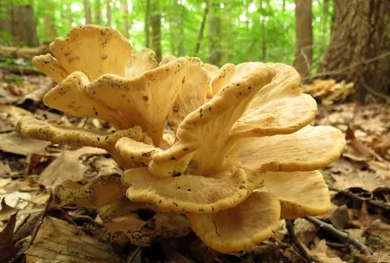
When you spot maitake mushrooms (Grifola frondosa) in the wild, their color and texture often blend so seamlessly with the bark of trees that they can be easy to overlook. Characterized by a fan-shaped, rippled appearance, maitake has a nutty, slightly spicy flavor and a meaty texture that makes it a versatile ingredient in dishes like soups, pizzas, and pasta.
Hen-of-the-woods can be a bit tricky to grow, as it requires a change in environmental conditions between its initial growth phase and the stage where it begins producing fruiting bodies.
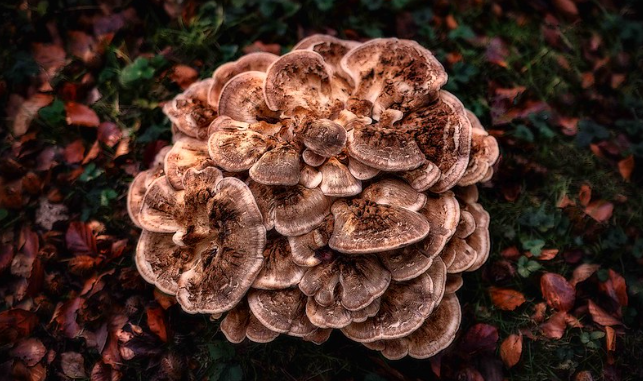
Using a grow kit can simplify the process, as it typically includes step-by-step instructions detailing the specific needs of maitake at each stage of its growth cycle, including the optimal temperature for each phase. When deciding where to grow your maitake mushrooms, consider whether your countertop is the best spot, or if another area of your home with the right conditions might be more suitable.
Also read the latest articles here at Petalwhirl
Oyster (Pleurotus ostreatus)
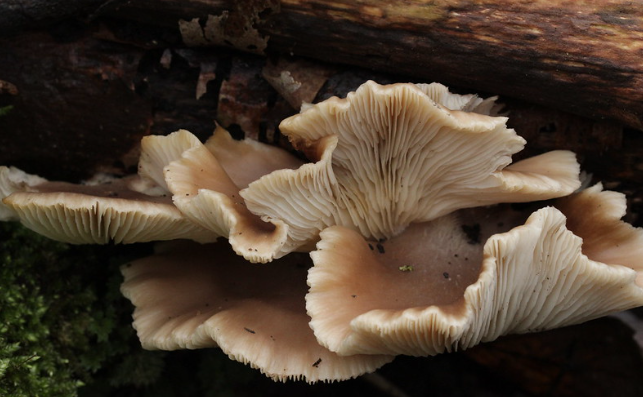
The oyster mushroom (Pleurotus ostreatus) is one of the most common and easiest mushrooms to grow, known for its distinctive fan-shaped cap. These mushrooms typically grow in clusters, often on short stems or sometimes with no stems at all. The underside of the cap features delicate grooves or gills, while the top is smooth. Oyster mushrooms are most commonly found in white, tan, or light brown, but they also come in vibrant shades of yellow, pink, and blue, adding a unique pop of color to any dish.
Oyster mushrooms have a subtle, earthy flavor with a hint of anise that some people notice. While they’re not typically eaten raw, once steamed or sautéed, their mild taste adds depth and richness to both side dishes and main courses.
If your countertop stays within a cooler temperature range of 64-77°F (18-25°C) and is kept out of direct sunlight, oyster mushrooms might be the perfect variety for you to grow. As with most mushroom kits, it’s important to monitor the development of the mycelium. If it appears mostly brown, it needs more time to mature. If it’s mostly white, it’s time to open the plastic wrap and start misting.
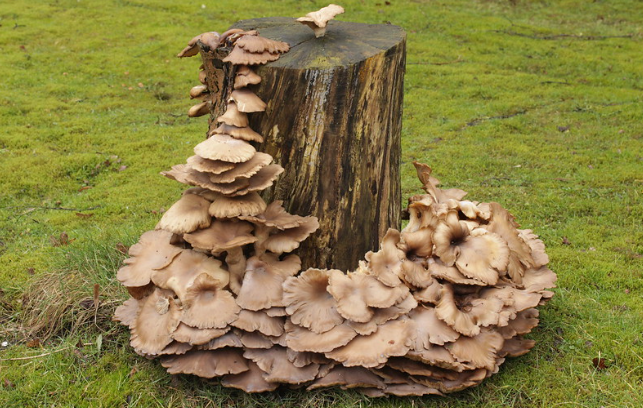
A key tip for successfully growing oyster mushrooms: ensure your kit receives proper air circulation. Finding the right balance between humidity and fresh air can be tricky, but once you get it right, your mushrooms will thrive! For a more detailed guide on growing oyster mushrooms, check out our comprehensive step-by-step resource here.
Reishi (Ganoderma lingzhi)
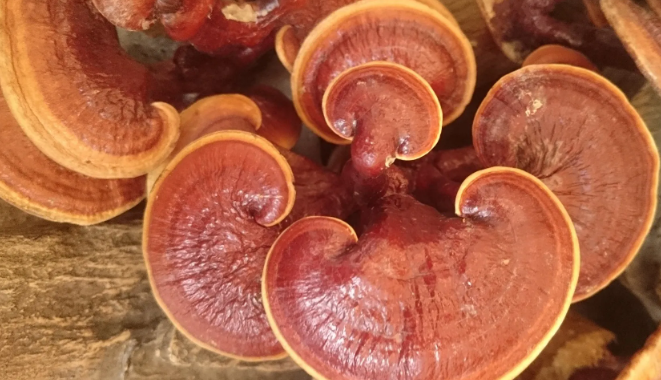
Reishi mushrooms (Ganoderma lingzhi) are a type of bracket or polypore fungi. Their distinctive, round fruiting bodies are reddish-brown with a smooth surface, often shaped like a fan or, in some instances, resembling the spiral of a nautilus shell.
Reishi mushrooms are not only a flavorful addition to dishes like soups, grain bowls, and even hot chocolate, but they are also renowned for their powerful medicinal properties. A staple in traditional Chinese medicine, reishi is increasingly recognized in Western medicine for its benefits in promoting heart health, treating insomnia, and managing asthma.
Growing reishi mushrooms requires patience and creating the right environment of light, humidity, and temperature. Unlike many mushroom varieties that are ready to harvest in just a few weeks, reishi produces only one crop per year. You may begin to see signs of growth after about four months. To help your reishi thrive, place it in a warm spot on your countertop, away from direct sunlight and disturbances.
Shiitake (Lentinula edodes)
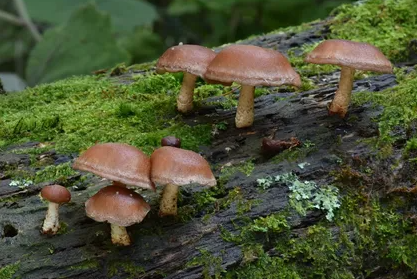
The shiitake mushroom (Lentinula edodes) is the classic brown mushroom, often found growing on decaying logs or featured in dishes like sautéed mushrooms on menus. With its rich brown color, light-colored stem, and iconic umbrella-shaped cap, the shiitake is easily recognizable. The cap may be smooth or show cracks and markings, resembling the surface of a freshly baked loaf of sourdough bread.
Shiitake mushrooms are packed with copper, a vital mineral that supports healthy blood vessels, bones, and immune function. They also contain selenium, adding to their nutritional benefits. Known for their rich, buttery flavor with an umami kick, shiitakes make a delicious addition to many dishes. If you’re not ready to use your freshly harvested shiitakes, you can easily dry them for later use.
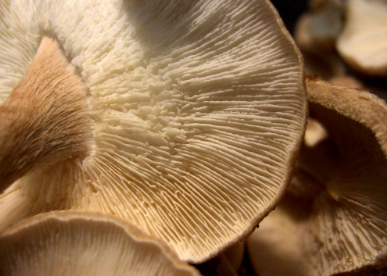
Shiitake mushrooms are an excellent choice for beginners due to their reliable and abundant flushes. To ensure they stay moist as they grow, be sure to mist them regularly or cover them with a humidity tent.

1 thought on “7 Mushrooms You Can Easily Grow Indoors”